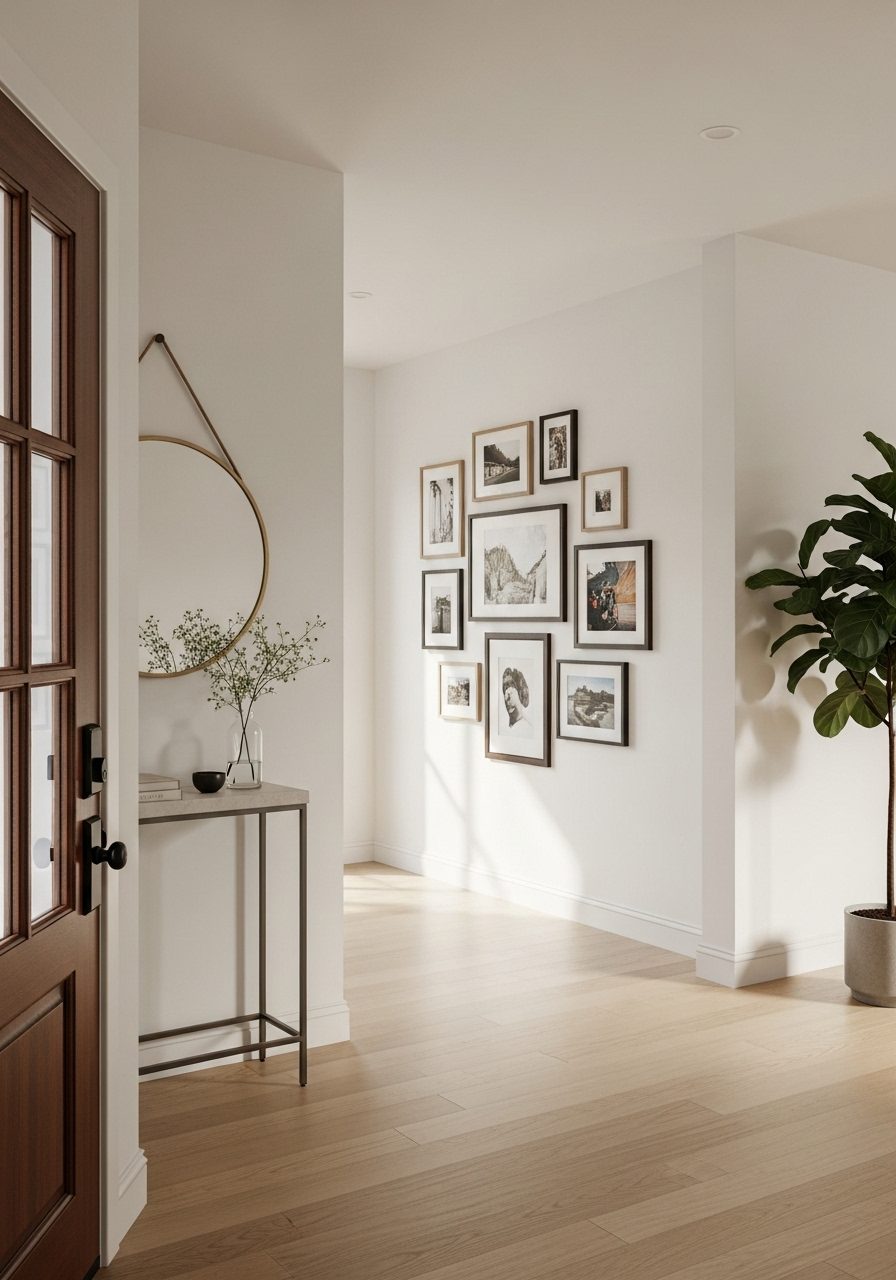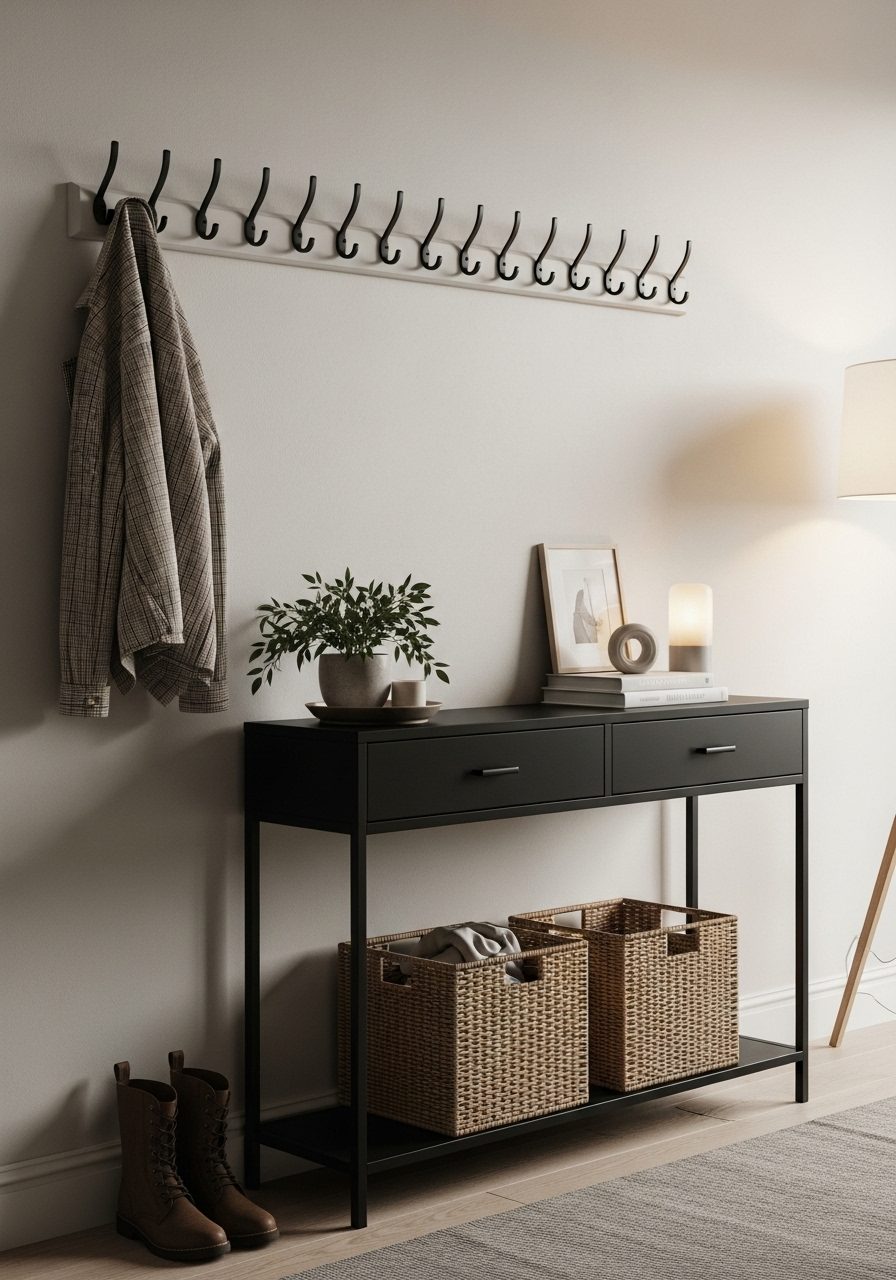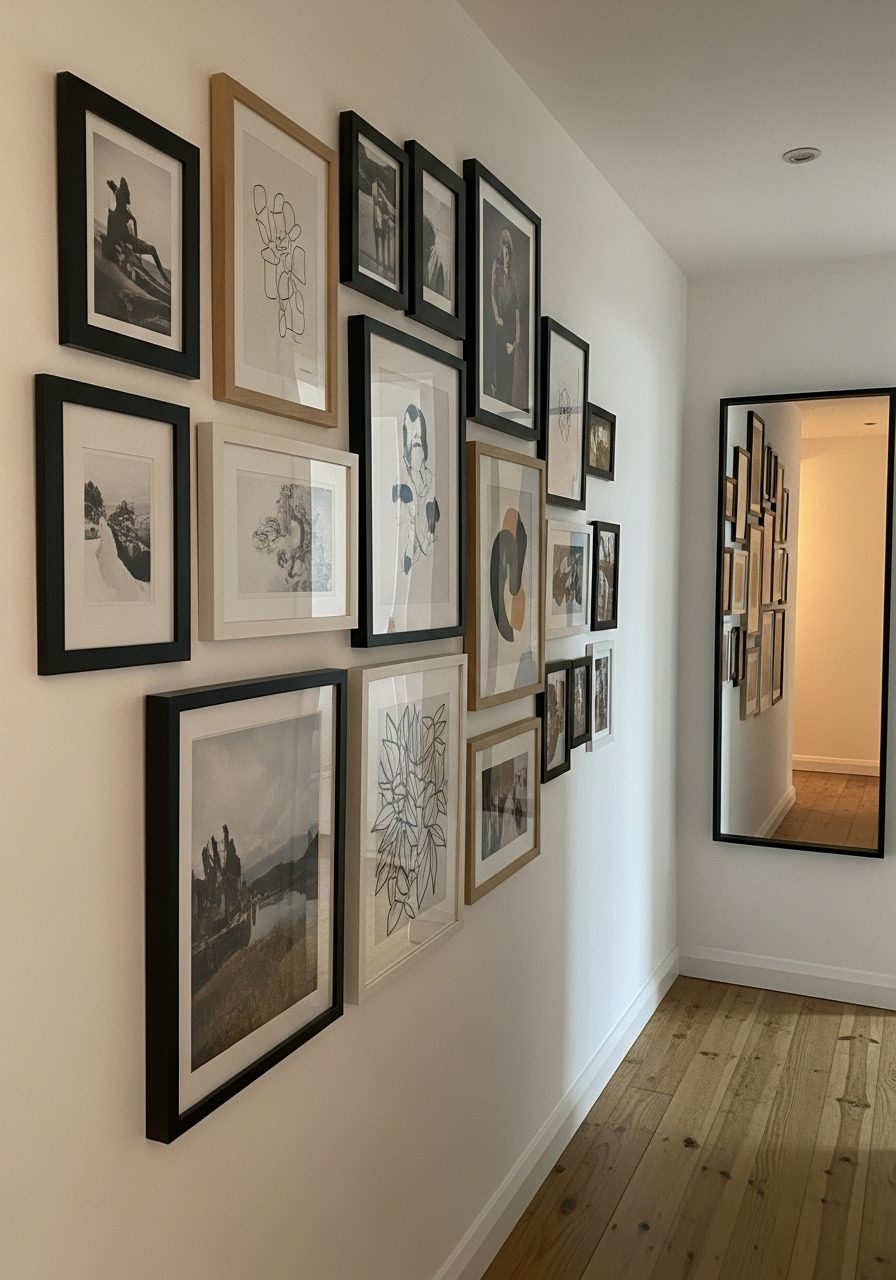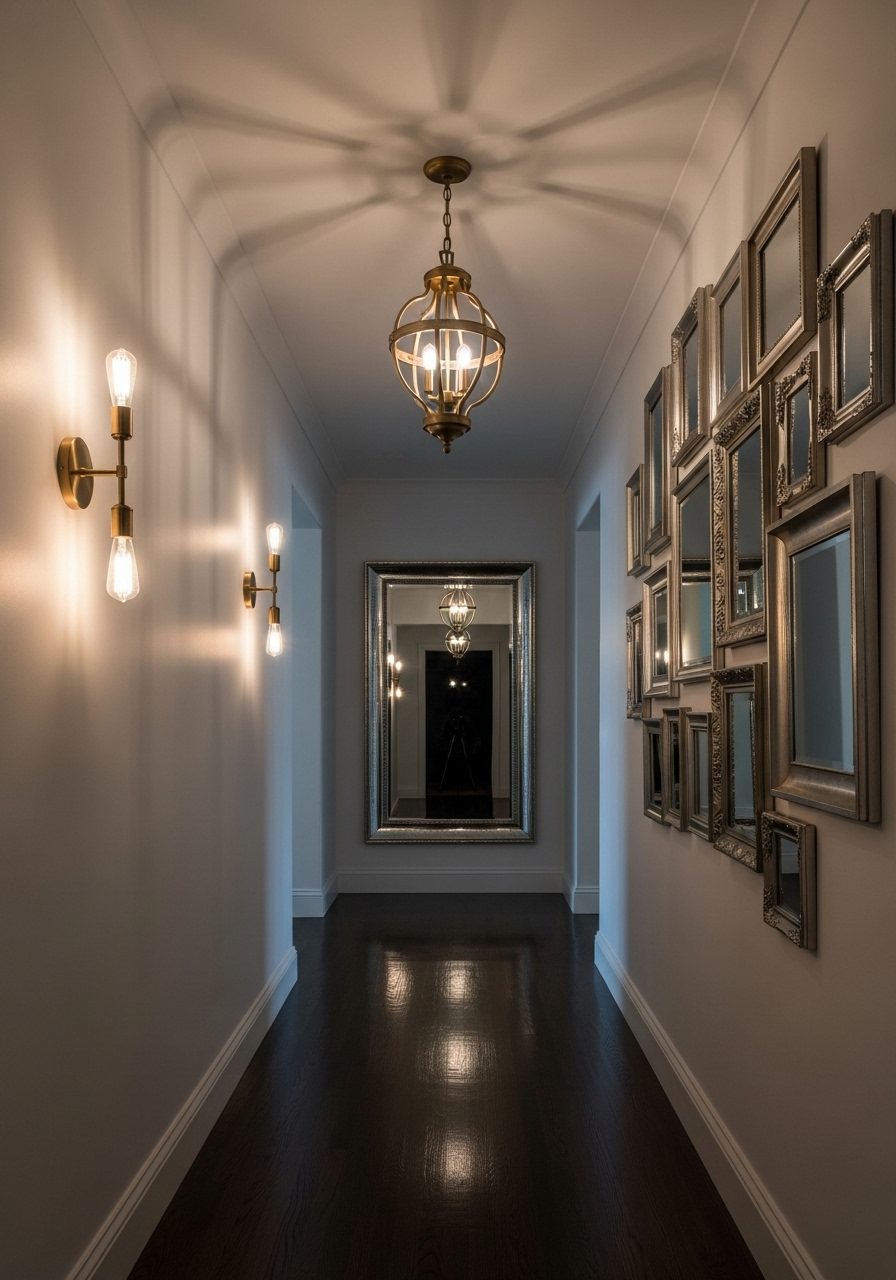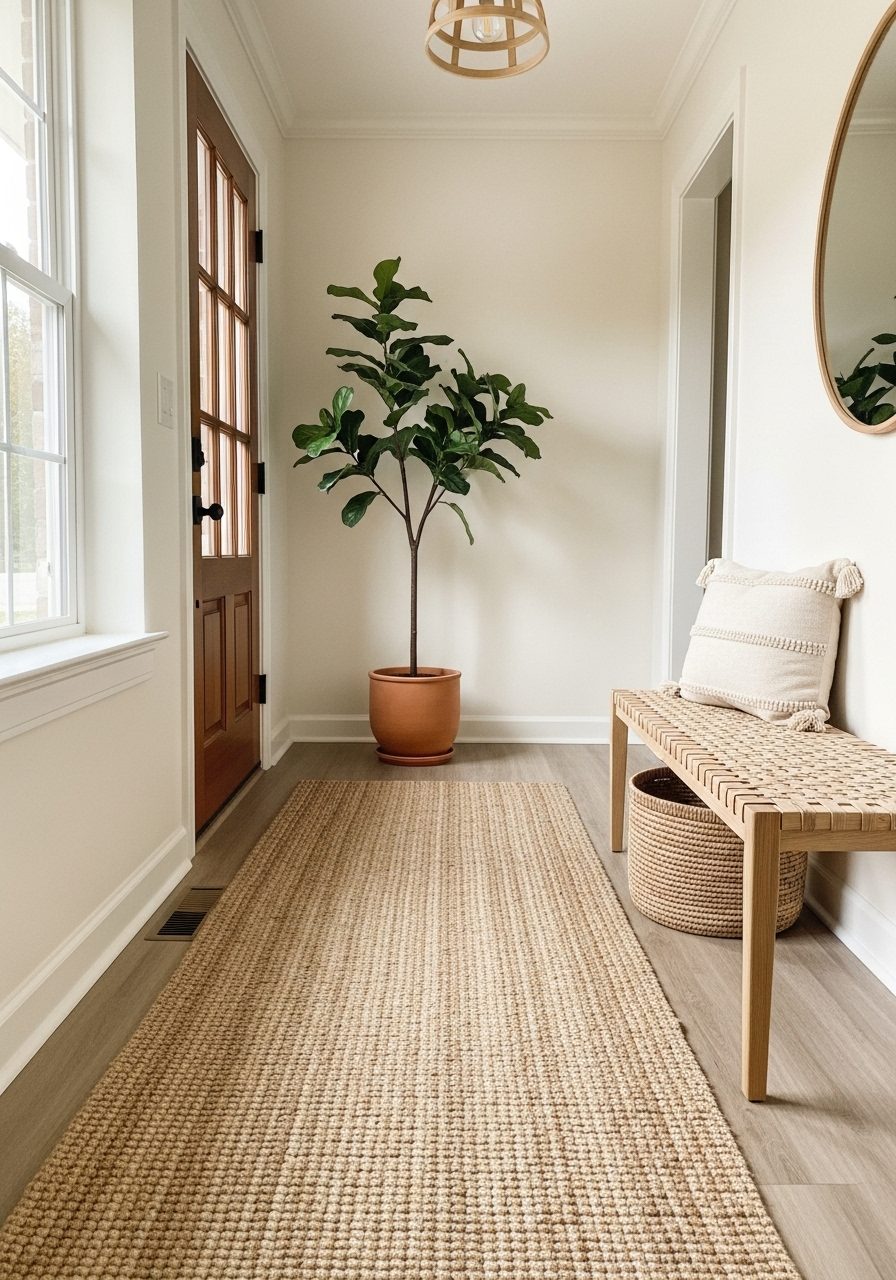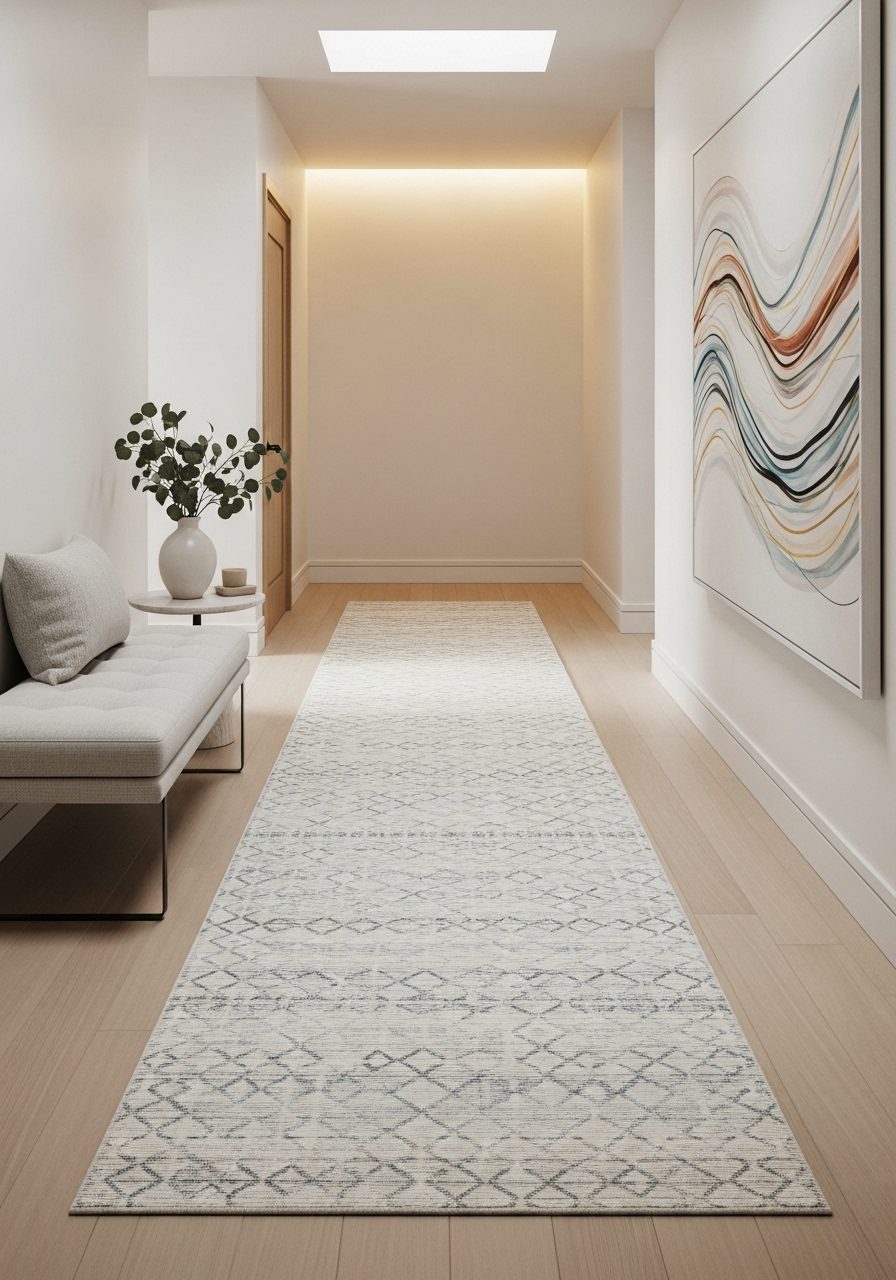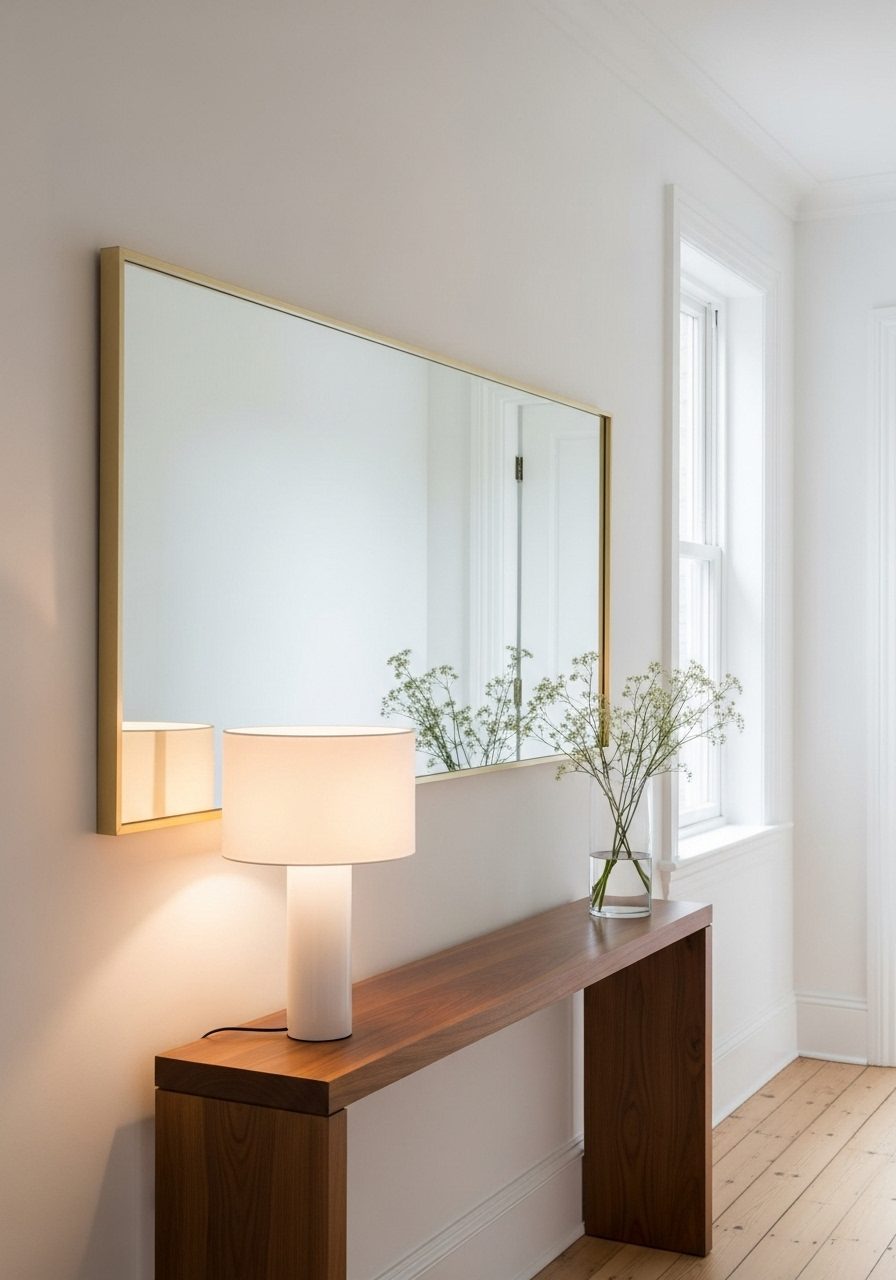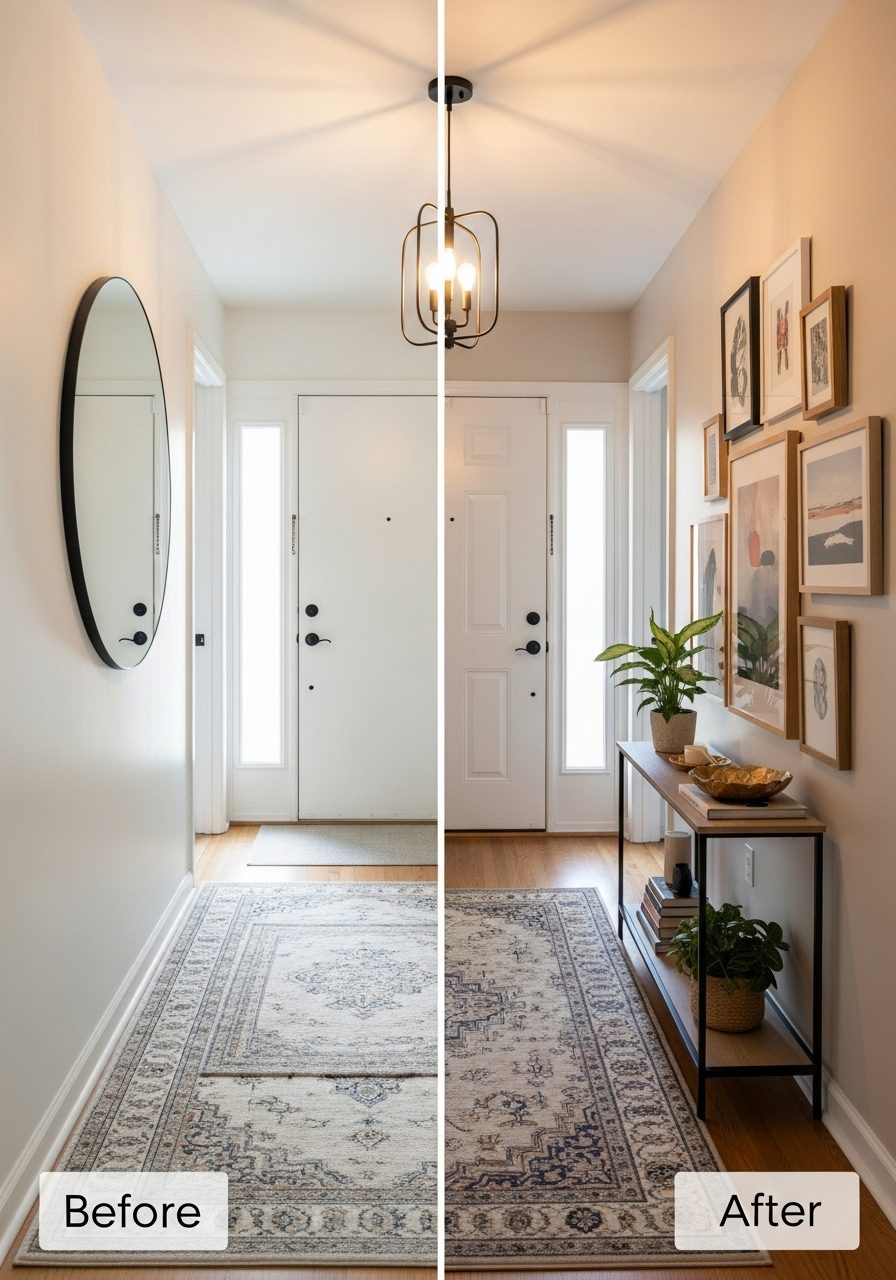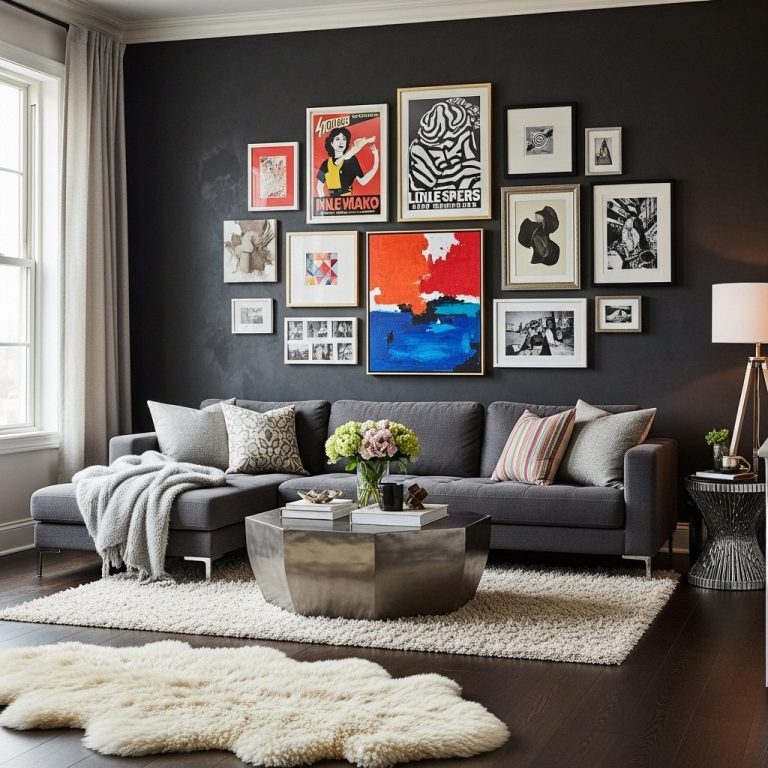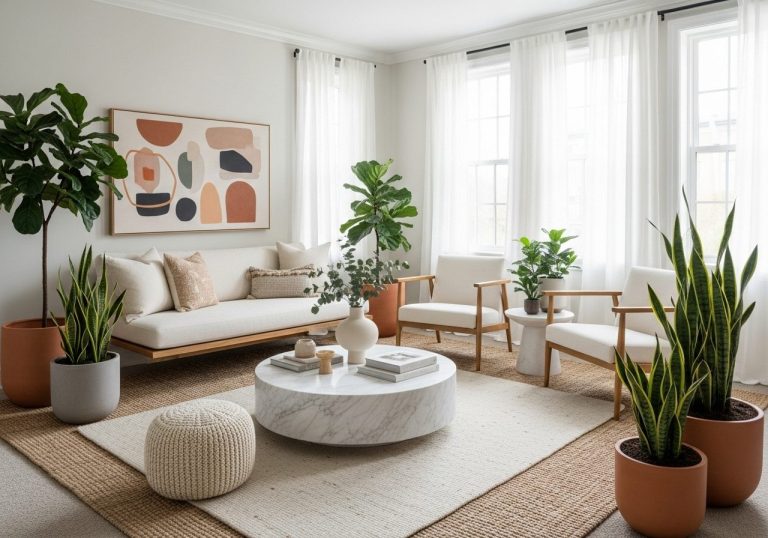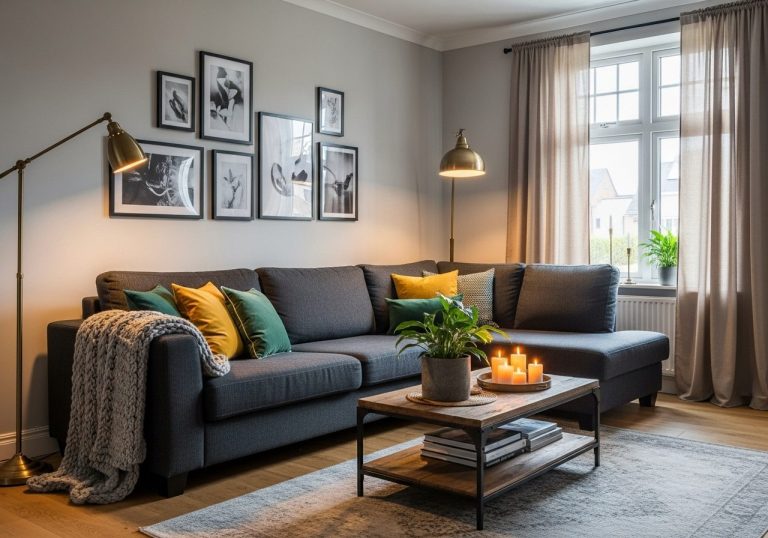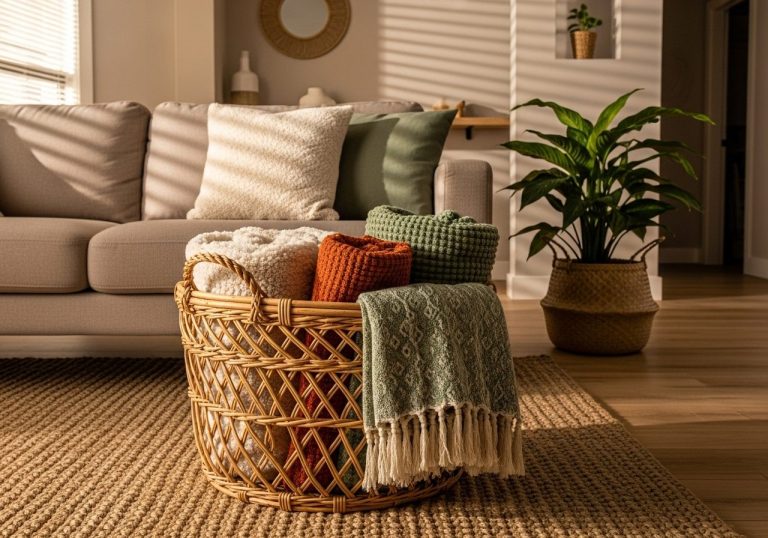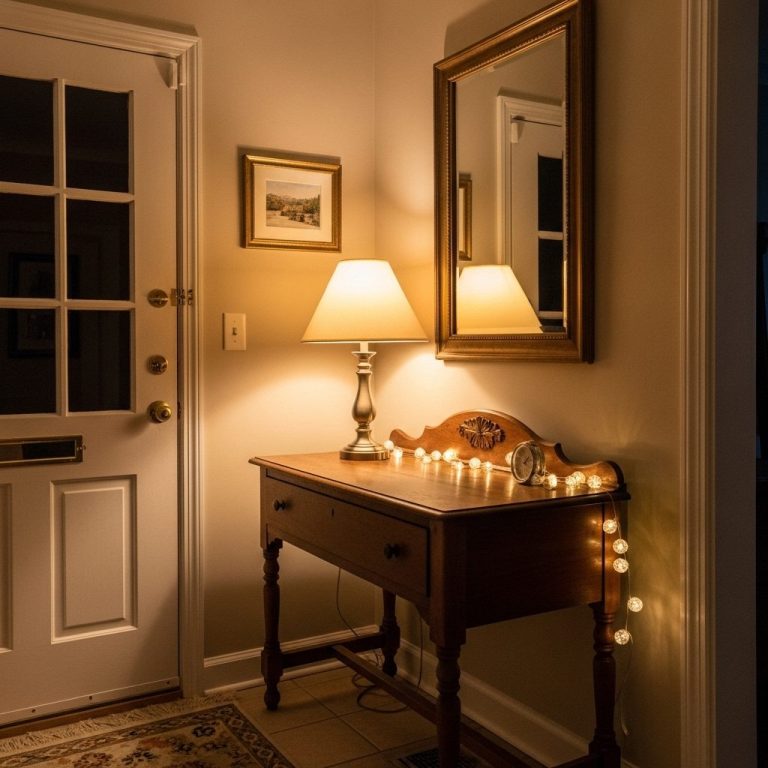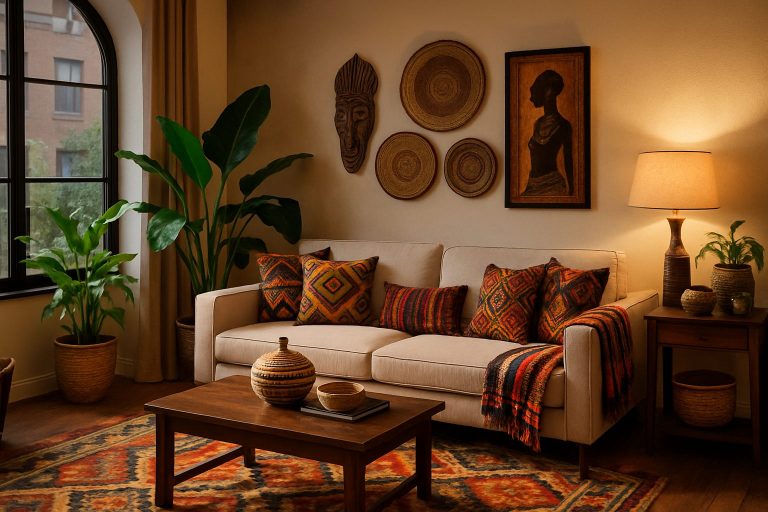How to Decorate a Long Entryway That Feels Stylish and Functional
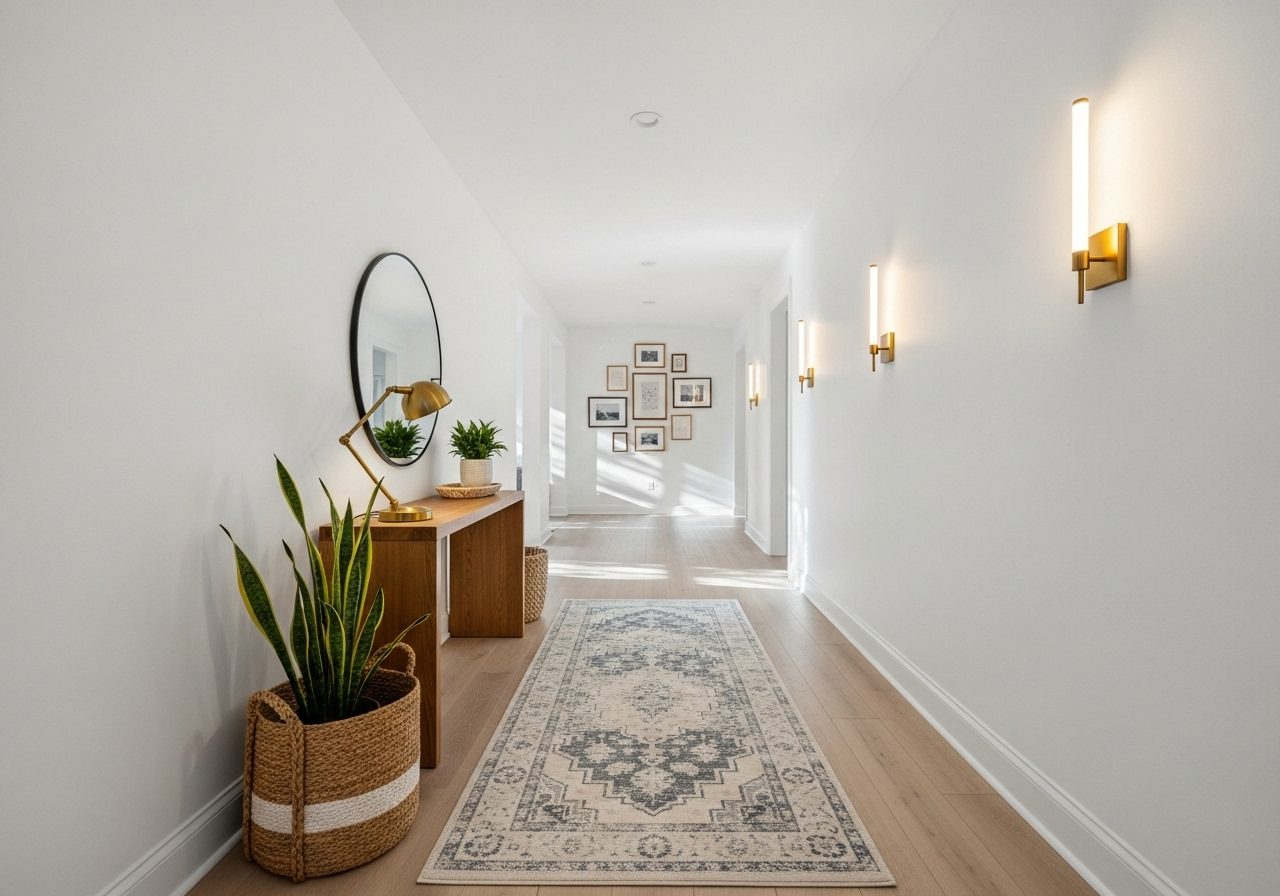
Table of Contents
- 1. Use Smart Layouts to Break Up the Space
- 1.1. Break Up the Entryway into “Zones”
- 1.2. Use Rugs or Flooring Transitions
- 2. Add Practical Storage with Style
- 2.1. Slimline Furniture That Fits
- 2.2. Vertical Storage Is a Game Changer
- 3. Use Wall Decor to Avoid the “Tunnel” Effect
- 3.1. Gallery Walls for Visual Rhythm
- 3.2. Vertical Artwork or Large Pieces
- 3.3. Color-Block Paint Techniques
- 4. Layer Lighting for Depth and Ambience
- 4.1. Statement Overhead Lighting
- 4.2. Wall Sconces and Recessed Lights
- 4.3. Warm vs Cool Light?
- 5. Incorporate Greenery and Natural Texture
- 5.1. Compact Greenery Solutions
- 5.2. Natural Textures That Work Well
- 6. Flooring and Runner Rugs for Continuity
- 6.1. Choose the Right Runner Rug
- 6.2. Rug Styling Tricks
- 7. Use Mirrors Strategically to Expand the Space
- 7.1. Add Width With Horizontal Mirrors
- 7.2. Try a Gallery of Small Mirrors
- 8. Choose a Color Scheme That Complements Flow
- 8.1. Neutral Doesn’t Mean Boring
- 8.2. Accent Walls Add Drama
- 9. Make the Entryway Feel Like a Room
- 9.1. Include Seating When Possible
- 9.2. Add Personal Touches
- 10. Use Styling Themes to Pull It All Together
- 10.1. Modern Minimalist
- 10.2. Scandinavian-Inspired
- 10.3. Boho Entryway
- 11. Case Studies: Real-Life Entryway Makeovers
- 11.1. Before & After 1: Small Urban Condo (12-ft Hallway)
- 11.2. Before & After 2: Suburban Home Entry (22-ft Hallway)
- 12. Frequently Asked Questions (FAQs)
- 12.1. How do you style a long narrow entryway?
- 12.2. What kind of rug works best in a long entryway?
- 12.3. Can you put furniture in a narrow hallway?
- 12.4. How do you brighten a dark hallway?
- 12.5. What paint colors make a hallway look wider?
- 13. Transform Your Long Entryway Into a Statement Space
Long entryways can feel like tunnels—awkward, empty, and uninspired. But with the right strategies, they become inviting spaces that connect your home’s design while remaining useful.
Key Takeaways
- Break up the visual length with smart zoning and layout tricks.
- Choose multifunctional, slimline furniture to maximize space.
- Use lighting, wall decor, and rugs to create dimension and warmth.
- Add natural texture and greenery for a lived-in, welcoming feel.
Use Smart Layouts to Break Up the Space
Long entryways often feel like corridors—straight, empty, and disconnected. The key is to visually segment the space.
Break Up the Entryway into “Zones”
Dividing the entry into parts helps it feel intentional:
- Welcome zone: place a slim console table with a lamp and mirror.
- Storage zone: add a bench or hooks for coats and bags.
- Decor zone: use a statement artwork, gallery wall, or tall plant.
Use Rugs or Flooring Transitions
A runner isn’t just about comfort—it’s a layout tool:
| Tip | Use Case |
|---|---|
| Layered runners | Visually divide into zones |
| Contrasting floor tile | Signal transition from one area to next |
| Diagonal placement | Breaks monotony of long, straight walkways |
Expert tip: Designers often use 2–3 different visual treatments to make a 15+ foot entry feel “lived-in” instead of “passed through.”
Add Practical Storage with Style
Storage is essential, especially in a narrow entryway where clutter shows quickly. But it must look intentional.
Slimline Furniture That Fits
Look for shallow-depth items—less than 12 inches deep:
- Console tables with drawers
- Floating shelves
- Built-in cubbies
| Storage Type | Ideal Depth | Best For |
|---|---|---|
| Wall-mounted shelf | 6–8 inches | Keys, sunglasses |
| Slim console table | 8–12 inches | Mail, décor |
| Bench with cubbies | 12–15 inches | Shoes, baskets |
Vertical Storage Is a Game Changer
You don’t have floor space? Go up:
- Tall coat racks (ladder-style or leaning)
- Peg rails across the top third of the wall
- Wall-mounted organizers with hooks and pockets
Use Wall Decor to Avoid the “Tunnel” Effect
Blank walls in a long narrow hallway only stretch the space more. You need contrast and movement.
Gallery Walls for Visual Rhythm
Instead of centering all frames in one line:
- Stagger frames at different heights.
- Mix sizes: 8×10, 5×7, even circular mirrors.
- Use consistent frames for a clean look—or go eclectic for character.
Vertical Artwork or Large Pieces
Oversized artwork shortens the visual length:
- One bold painting breaks up “blankness”
- A vertical mirror bounces light and makes the entry seem wider
| Artwork Type | Best Placement | Effect |
|---|---|---|
| Large vertical print | Mid-entryway wall | Creates visual break |
| Staggered small frames | Along the walkway | Adds rhythm |
| Hanging textile (e.g., macrame) | Entry end wall | Adds warmth |
Color-Block Paint Techniques
Painting the bottom third of the wall in a darker shade visually lowers the ceiling and grounds the entry.
Layer Lighting for Depth and Ambience
Lighting is essential—not just for safety, but to make your entryway feel like a space, not a passage.
Statement Overhead Lighting
Don’t underestimate your ceiling:
- Try a semi-flush mount fixture for low ceilings.
- Use pendants for high ceilings.
- Add brass, matte black, or rattan fixtures to echo your style.
According to The Spruce, overhead lighting should offer 20 lumens per square foot in a hallway. That’s roughly a 900–1200 lumen fixture for a 10-foot entry.
Wall Sconces and Recessed Lights
Use lighting every 4–6 feet to ensure consistent glow:
- Modern sconces can add symmetry and style.
- Recessed ceiling spots offer a sleek option.
- Use LED strip lighting under shelves for a subtle glow.
Warm vs Cool Light?
Stick with 2700K to 3000K bulbs for entryways—cozy and natural.
| Light Type | Use Case | Best Temperature |
|---|---|---|
| Pendant light | Focal statement | 2700K |
| Wall sconce | Accent lighting | 3000K |
| LED strip | Subtle shelf glow | 2700–3000K |
Incorporate Greenery and Natural Texture
Biophilic design (bringing nature inside) is a powerful way to warm up long, sterile entries.
Compact Greenery Solutions
If floor space is limited:
- Tall, narrow plants like snake plant or fiddle leaf fig
- Hanging planters (macrame or wall-mounted)
- Small succulents on floating shelves
Natural Textures That Work Well
Entryways need warmth—but not bulk.
| Texture | How to Use It | Impact |
|---|---|---|
| Jute or sisal rugs | Runners or mats | Earthy base tone |
| Rattan or seagrass baskets | Shoe or mail storage | Adds pattern and warmth |
| Linen or cotton | Wall hangings, cushions | Softens the space |
Use at least two natural textures in every entryway for balance. Even one woven mirror or cane bench adds a grounded feel.
Flooring and Runner Rugs for Continuity
Long entryways benefit from a unified floor look—but not one that bores the eye.
Choose the Right Runner Rug
For long spaces:
- Use runners that leave 6–12 inches of floor visible on each side.
- Go for durable, low-pile rugs that can handle foot traffic.
- Avoid overly small rugs—it breaks the flow and looks out of proportion.
| Entry Length | Ideal Runner Length |
|---|---|
| 10 ft | 8–9 ft runner |
| 15 ft | 12–14 ft runner |
| Over 20 ft | Two layered runners or a custom-length piece |
Rug Styling Tricks
- Layer a flat-weave rug under a statement runner for texture.
- Use rugs to transition colors from one room to the next.
- Use patterns to visually widen the entry: try horizontal stripes or large geometric motifs.
Use Mirrors Strategically to Expand the Space
Mirrors aren’t just decorative—they’re architectural tools when used in long, narrow entryways.
Add Width With Horizontal Mirrors
A wide mirror hung at eye level:
- Visually expands the width of the hallway
- Reflects light, especially if opposite a window or door
- Acts as a centerpiece above a console or bench
Try a Gallery of Small Mirrors
Mix and match styles in symmetrical or asymmetric layouts:
- Combine round, square, and vintage frames
- Use consistent spacing for a curated look
- Great for transitional or eclectic styles
| Mirror Style | Best Use Case | Visual Effect |
|---|---|---|
| Oversized horizontal | Above console or bench | Widens hallway |
| Gallery of small mirrors | Mid-wall gallery | Adds depth and sparkle |
| Tall vertical mirror | Near entry door | Useful and space-enhancing |
Choose a Color Scheme That Complements Flow
Your entryway color palette should echo your home’s tones while setting a welcoming tone.
Neutral Doesn’t Mean Boring
Start with whites, taupe, or greige tones. Then layer:
- Black for contrast (frames, sconces)
- Warm wood tones for coziness
- Brass or matte gold for luxury touch
According to Sherwin-Williams, the best colors for hallways include Repose Gray, Alabaster, and Accessible Beige.
Accent Walls Add Drama
A painted or wallpapered end wall draws the eye and breaks up the tunnel.
- Try deep navy, forest green, or terracotta
- Use peel-and-stick wallpaper for texture or patterns
- Consider painted arches to soften angles
Make the Entryway Feel Like a Room
One of the best decorating tips: treat the long hallway like its own space.
Include Seating When Possible
Benches offer comfort and structure:
- Built-in benches with drawers
- Upholstered bench with hooks above
- Storage ottomans with baskets underneath
Add Personal Touches
Use the space to reflect your lifestyle:
- Family photos, framed travel prints
- Small sculpture or a favorite vase
- A coat rack with character
| Feature | Purpose | Style Tip |
|---|---|---|
| Bench | Seating + storage | Add cushions for softness |
| Shelf with frames | Personal decor | Mix vertical and horizontal pieces |
| Wall hooks | Daily use | Choose statement or themed hooks |
Use Styling Themes to Pull It All Together
A cohesive theme gives your entry intention. Choose based on your home’s design.
Modern Minimalist
- White walls, black hardware
- Floating shelves, no clutter
- Slim benches and high contrast rug
Scandinavian-Inspired
- Light woods, white walls
- Peg rails and soft textiles
- Neutral runners and framed art
Boho Entryway
- Patterned runners, macrame
- Rattan mirrors and colorful wall art
- Plants everywhere
Case Studies: Real-Life Entryway Makeovers
Before & After 1: Small Urban Condo (12-ft Hallway)
Problem: Narrow, bland white walls
Solution:
- Painted end wall navy blue
- Added floating shelf with hooks
- Installed runner with soft geometric pattern
Result: Space looked twice as wide, and more inviting.
Before & After 2: Suburban Home Entry (22-ft Hallway)
Problem: Long, empty passage with dim lighting
Solution:
- Broke into 3 zones (mirror + bench, art wall, plant corner)
- Added warm LED sconces and 3 pendant lights
- Used jute rug with layered runner
Result: Entry felt like part of the home, not a pass-through.
Frequently Asked Questions (FAQs)
How do you style a long narrow entryway?
Break it into zones, use a runner rug, add vertical storage and wall art. Layer lighting and keep the color palette unified to avoid a tunnel feel.
What kind of rug works best in a long entryway?
Choose a low-pile runner that’s 2–3 feet wide and leaves 6–12 inches of floor exposed on each side. Patterned rugs help hide dirt and define zones.
Can you put furniture in a narrow hallway?
Yes—opt for slimline pieces like console tables (8–12 inches deep), floating shelves, or storage benches that are no wider than necessary.
How do you brighten a dark hallway?
Use layered lighting: ceiling fixtures, wall sconces, and mirror placement. Choose warm light bulbs (2700K–3000K) and light-colored walls or art.
What paint colors make a hallway look wider?
Soft whites, light greys, and pale beige expand space. You can add drama with a dark end wall or half-wall paint technique.
Transform Your Long Entryway Into a Statement Space
Decorating a long entryway doesn’t have to be a design challenge—it’s an opportunity to make a lasting first impression. By dividing the space into zones, incorporating layered lighting, using smart storage, and embracing vertical design elements like mirrors and wall art, your hallway can go from forgettable to functional and fabulous.
Whether your goal is utility, beauty, or both, remember these core principles:
- Keep furniture slim and purposeful.
- Use rugs and decor to visually break up the length.
- Layer lighting to add warmth and depth.
- Incorporate nature and texture to soften the space.
A well-designed entryway sets the tone for your entire home. Treat it like a room—because it is. And with these strategies, your long hallway can finally become a space that feels personal, inviting, and stylish.

